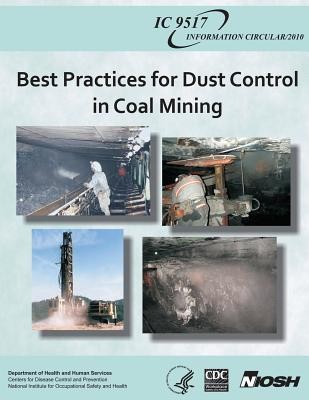| Best Practices for Dust Control in Coal Mining Contributor(s): And Prevention, Centers for Disease Cont (Author), Safety and Health, National Institute Fo (Author), Human Services, D. (Author) |
|
 |
ISBN: 1493566229 ISBN-13: 9781493566228 Publisher: Createspace Independent Publishing Platform OUR PRICE: $14.05 Product Type: Paperback - Other Formats Published: October 2013 |
| Additional Information |
| BISAC Categories: - Technology & Engineering | Industrial Health & Safety |
| Physical Information: 0.17" H x 8.5" W x 11.02" (0.48 lbs) 84 pages |
| Descriptions, Reviews, Etc. |
| Publisher Description: Respirable dust exposure has long been known to be a serious health threat to workers in many industries. In coal mining, overexposure to respirable coal mine dust can lead to coal workers' pneumoconiosis (CWP). CWP is a lung disease that can be disabling and fatal in its most severe form. In addition, miners can be exposed to high levels of respirable silica dust, which can cause silicosis, another disabling and/or fatal lung disease. Once contracted, there is no cure for CWP or silicosis. The goal, therefore, is to limit worker exposure to respirable dust to prevent development of these diseases. The passage of the Federal Coal Mine Health and Safety Act of 1969 established respirable dust exposure limits, dust sampling requirements for inspectors and mine operators, a voluntary x-ray surveillance program to identify CWP in underground coal miners, and a benefits program to provide compensation to affected workers and their families. The tremendous human and financial costs resulting from CWP and silicosis in the U.S. underground coal mine workforce are shown by the following statistics: - During 1970-2004, CWP was a direct or contributing cause of 69,377 deaths of U.S. underground coal mine workers. - During 1980-2005, over $39 billion in CWP benefits were paid to underground coal miners and their families. - Recent x-ray surveillance data for 2000-2006 show an increase in CWP cases. Nearly 8% of examined underground coal miners with 25 or more years of experience were diagnosed with CWP. - "Continuous miner operator" is the most frequently listed occupation on death certificates that record silicosis as the cause of death. In light of the ongoing severity of these lung diseases in coal mining, this handbook was developed to identify available engineering controls that can help the industry reduce worker exposure to respirable coal and silica dust. The controls discussed in this handbook range from long-utilized controls that have developed into industry standards to newer controls that are still being optimized. The intent was to identify the best practices that are available to control respirable dust levels in underground and surface coal mining operations. This handbook provides general information on the control technologies along with extensive references. In some cases, the full reference(s) will need to be consulted to gain in-depth information on the testing or implementation of the control of interest. |